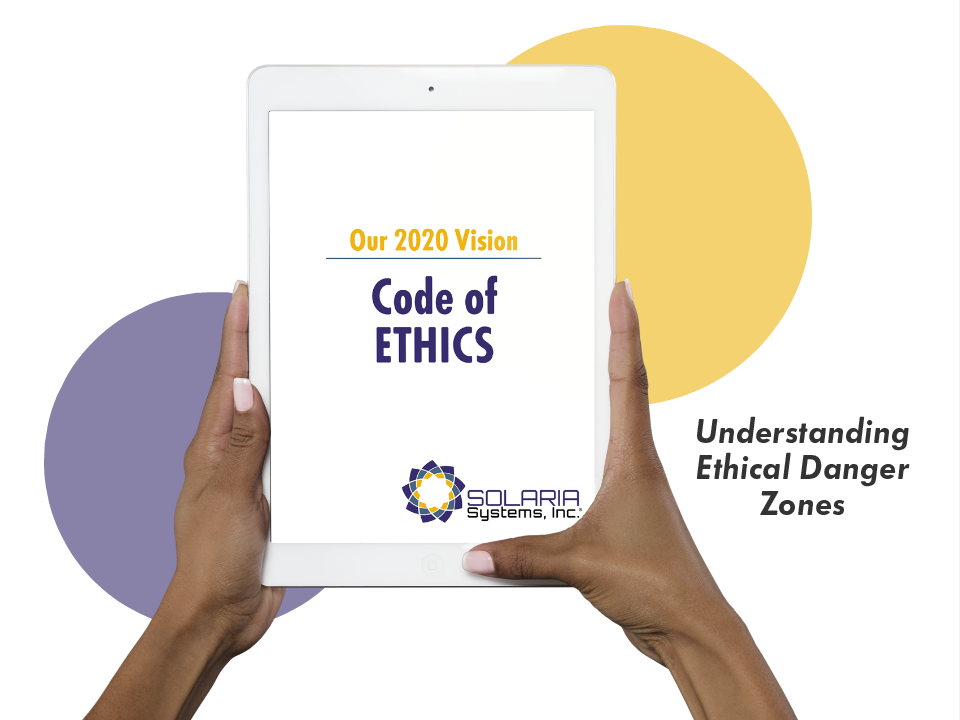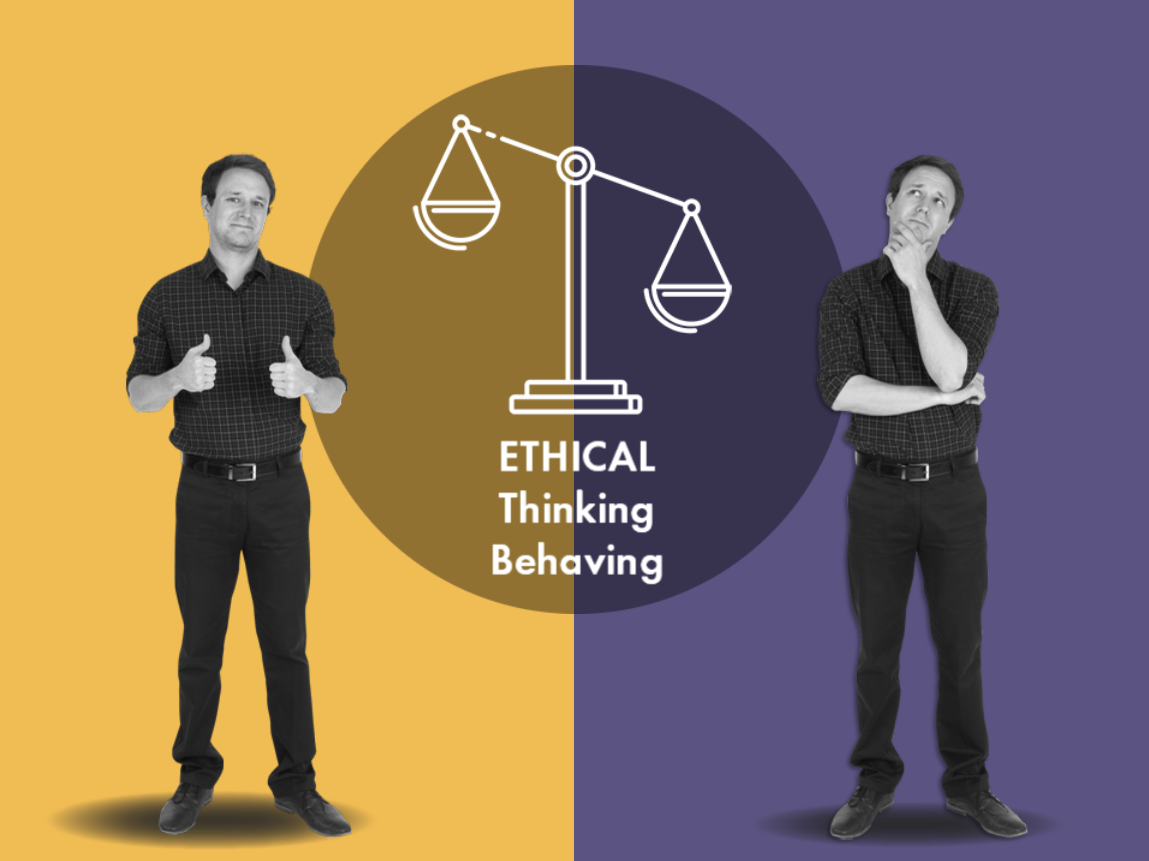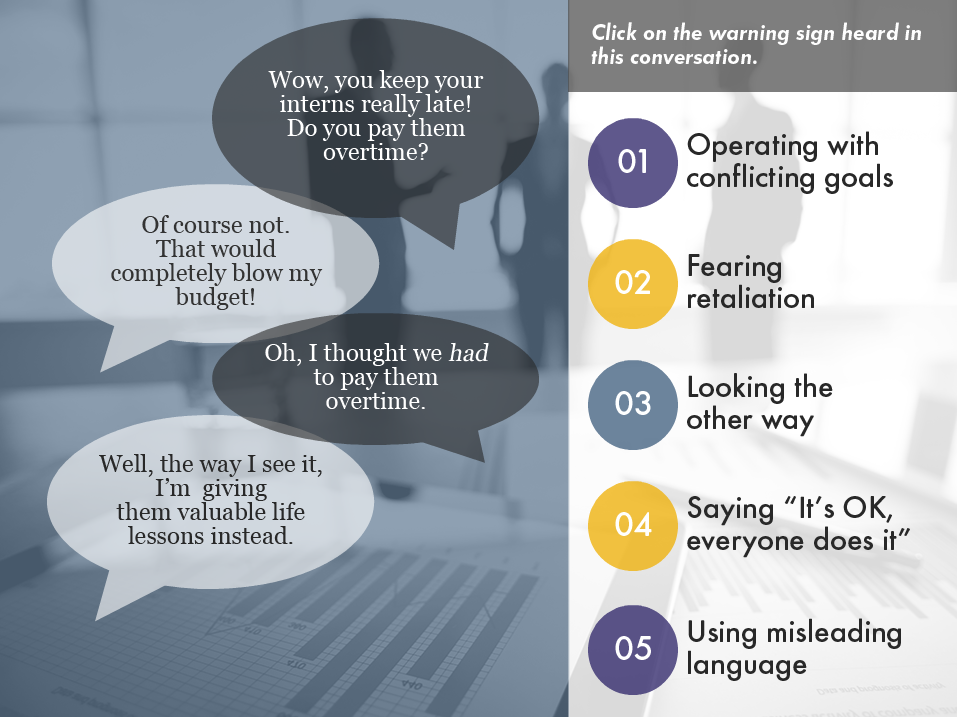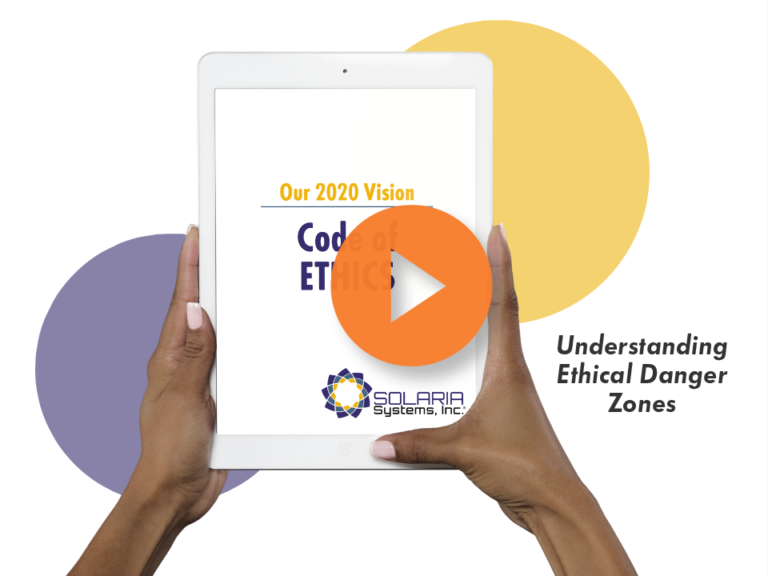
SOLARIA ETHICS TRAINING
Solaria Systems, Inc. holds its associates to the highest standards of ethical behavior. This elearning program provides tools for recognizing the warning signs of unethical activity before it happens.
THIS PROGRAM'S SPECIAL POWERS

Clean graphic style
A controlled color palette, consistent on-screen graphics, and lots of white space provide an attractive look and feel.

Real-life people
Images of everyday people increase the sense that the program is talking about (and to) you and me, not scary-perfect stock photo people.

A bit of whimsy
Graphic solutions stretch the boundaries of what's expected to keep the viewer's interest, elevating what can typically be dull training material into something more fun.

Scenario-based approach
Realistic scenarios provide connections with the learner's every day experiences, bringing the learning into focus.
DEVELOPMENT NOTES
Challenges
Standard ethical training can “check the boxes” of corporate compliance training, but leave viewers no better prepared to meet common ethical challenges. When the training becomes a stern lecture about abstract concepts of idealized behavior, this weighty approach fails to provide tools for navigating the real world of workplace right and wrong.
Strategies
This solution—an excerpt from a full Solaria ethics training program—focuses less on the corporation’s position on ethics, and more on the realities of the workplace. It acknowledges that lapses in ethical behavior can (and do) happen, even to the viewer him or herself. With that established, the program provides clear information on how to recognize unethical thinking before it leads to unethical behavior.
Solution
The program meets the challenges of ethics training in a visually-engaging manner that is designed to encourage the viewer to lean-in and pay attention. The program avoids the usual slides of text and clipart to deliver a high quality interactive multimedia experience.
In addition, the program uses an “ask, then tell” instructional method. This approach allows the learner to form their thoughts before the teaching begins, creating mental containers for new information.
Also featured as an example at eLearningArt.com.

